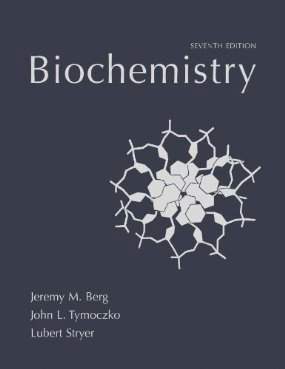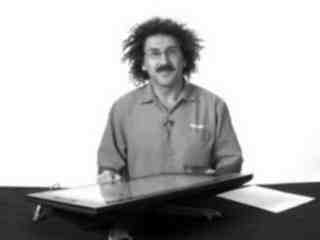
This is a quick preview of the lesson. For full access, please Log In or Sign up.
For more information, please see full course syllabus of Biochemistry
For more information, please see full course syllabus of Biochemistry
Biochemistry Thermodynamics, Free Energy & Equilibrium
Lecture Description
Bioenergetics power all of the processes that take place in living organisms. They follow the same rules of thermodynamics, kinetics, free energy, and equilibrium as the rest of nature, so a reaction will happen spontaneously if conditions are right and energy (heat) will be released or if it increases the entropy (disorder) of the system or surroundings. To find out whether a reaction is thermodynamically favorable, the change in Gibbs Free Energy can be calculated: ΔG = ΔH – TΔS at constant pressure. This lecture also talks about the biochemistry standards for pH, pressure, and temperature, as well as the equilibrium constant, and an example using the first step in glycolysis (glucose + Pi → Glucose 6-Phosphate).
Bookmark & Share
Embed
Share this knowledge with your friends!
Copy & Paste this embed code into your website’s HTML
Please ensure that your website editor is in text mode when you paste the code.(In Wordpress, the mode button is on the top right corner.)
×
- - Allow users to view the embedded video in full-size.
Next Lecture
Previous Lecture










































 Answer Engine
Answer Engine





0 answers
Post by Swati Sharma on January 29, 2018
Dear Dr Raffi,
If I am not wrong, this means that if K>1, there are more products that the reactants and if K<1 there are more reactants than the product at EQULIBRIUM. So k would not tell us about the direction of the reaction? K would tell us only if there are more products that the reactants?
SO to find the direction of the reaction we need to first find Q?
So for example if question says if the: Equilibrium constant of the reaction is 25, which direction the reaction would proceed? So I know that there are more products than the reaction, but what about the direction? Does that mean that if k>1 the reaction would go in the forward direction and if K<1 the reaction would go in the reverse direction?
In exam would Q be given? What if Q is not given and they tell us to find the direction of the reaction only with K. So if the Equilibrium constant of the reaction is 25, which way would the reaction proceed? So how do I find the direction if Q is not given in the exam? and only with K =25 or may be the question is wrong? I always loose points on these questions in exam I just wondering if K is only to know the concentrations at equilibrium , and Q is fro the direction. But what If Q is not given, only K is given and the question does not ask whether the Products are in greater concentration or the reactants, but instead asks what is the direction of the reaction?
So I thought if K = 25, K>1, there are more products at equilibrium, so the reaction would go towards reactants , since according to Le Chatliers principle there are more products , so the excess products would be converted to reactants in order to maintain equilibrium. I am really sorry if my question is frustrating , I just want to make sure what I am thinking is right or wrong. I short K will not give us the direction? Q will give us the direction? Would I get a question in exam asking me about the direction of the reaction only with K or q would be provided?
Respectfully
Swati
2 answers
Last reply by: Swati Sharma
Mon Jan 29, 2018 10:24 AM
Post by Swati Sharma on January 28, 2018
Dear Dr Raffi, I am very confused with this question
The equilibrium constant for the reaction Q ? R is 25.
(a) If 50 uM of Q is mixed with 50 uM of R, which way will the reaction proceed: to generate more Q or more R?
The answer says that the reaction would go towards the formation of products but I thought that according to Lechatliers principle when the products are in excess the reaction would go towards reactants to balance each other right?, So why does the answer says that the reaction would go towards products?
Respectfully
Swati
3 answers
Sun Jul 3, 2016 7:27 PM
Post by Kaye Lim on June 13, 2016
At 30:25 where you said as rxn move forward to reach equilibrium, rxn spend its free Energy and delG is risen as reactant is gone.
-->At this point, I dont understand how delG is risen when you take a new measurement of G reactant and G product. I thought for 1 mole of reactant go to product, the process release for example -50kJ of free Energy. So as rxn moves toward equilibrium, x amount of reactant got used, and there are still some reactant unreacted.
Basically, I dont understand how delG risen to 0 as rxn reach equilibrium.
This is my interpretation for delG=0 at equil, please tell me if Im correct. DelG=0 at equilibrium because rate of forward and rate of reverse rxn are equals at equilibrium. Thus, the Energy released for the forward reaction also got used at the same time by the reverse rxn to form reactant. Therefore, overall, change in free E =0 as the Energy released also got used at equilibrium. Is it correct?
1 answer
Wed Oct 8, 2014 6:04 PM
Post by leala aljehane on October 8, 2014
Hello, Prof.Hovasapian
I just have a question. you said that when Delta G is positive value that means the product has more energy than the reactants; therefore, we need to input energy to drive the reaction. How can we know that the products have more energy than reactants before we actually start the reaction and get the product? because we just have reactants which group of substances react to form product? I just get confused how can I know the energy for something that I have not yet have it. I hope that I clear my question.
1 answer
Sat Nov 9, 2013 2:09 AM
Post by Razia Chowdhry on November 8, 2013
Also, where does the concept of ICE come from? And why would the equilibrium concentration be initial conc. + change conc.?
2 answers
Sat Nov 9, 2013 2:06 AM
Post by Razia Chowdhry on November 8, 2013
For the reaction you did aA+bB-->cC+dD. I don't understand what these small letters stand for? I know the capital stands for concentration of that species but what about the small letters
1 answer
Mon May 27, 2013 5:48 PM
Post by marsha prytz on May 27, 2013
so when i put this keq equation into my calculator it does not equal to 20.97. i come up with a completely different number in the 200s. how do i put this calculation into my calculator?
1 answer
Mon May 27, 2013 5:41 PM
Post by marsha prytz on May 27, 2013
what does the "e" stand for in = e^3.043?